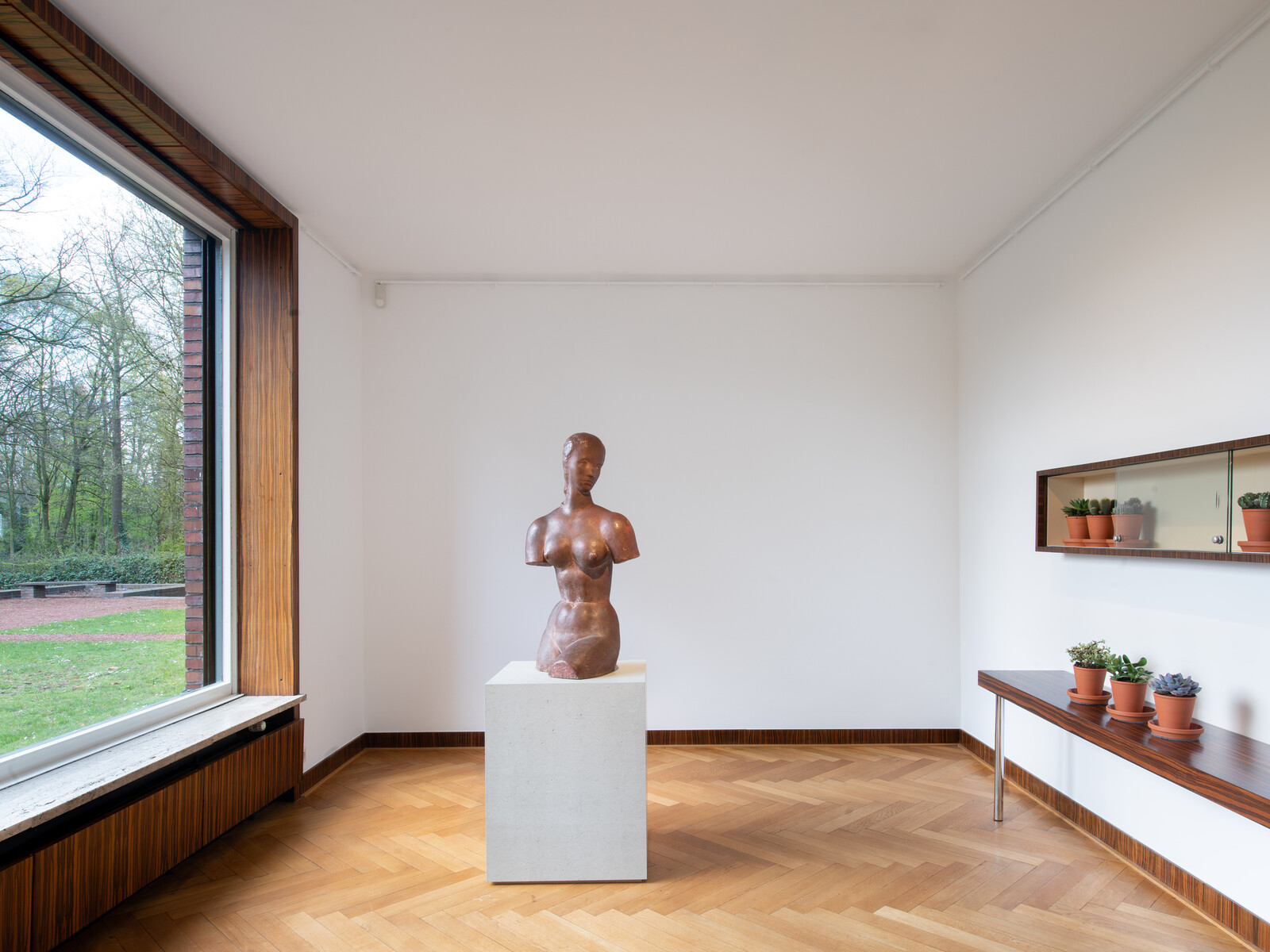April 18–August 29, 2021
Wilhelmshofallee 91-97
47800 Krefeld
Germany
With the exhibition Lehmbruck –Kolbe –Mies van der Rohe: Artificial Biotopes, the Kunstmuseen Krefeld thematizes the interrelationship of these three outstanding protagonists of the modern era and the coexistence of architecture, sculpture, and nature. A total of 15 sculptures by Wilhelm Lehmbruck and Georg Kolbe enter into a dialogue with Haus Lange, designed by Mies van der Rohe as a country house. For the first time, the house and garden are seen as an organic system in which figurative sculpture is integrated both as independent work of arts and as living organisms.
Built between 1927 and 1930, Haus Lange and Haus Esters form a unique architectural ensemble of the International Style. “In keeping with the spirit of Mies van der Rohe, who conceived of architecture, design, and art as a unity, we at the Kunstmuseen Krefeld have been pursuing a program focused on interdisciplinary connections since 2016,” explains museum director Katia Baudin. “The current exhibition curated by Dr. Sylvia Martin now takes a look at classical modernism at this historic location. Whereas sculpture and nature were previously considered individual themes in the work of Mies van der Rohe, this project brings the three aspects together for the first time and examines them from the perspective of sculpture.”
In the 1920s, when, with the Neues Bauen (New Building) movement, a functional objectivity attempted to order life in the Weimar Republic, architecture and sculpture were also redefined. Architectural sculpture as decoration was replaced by autonomous sculpture that asserted itself within the framework of architecture. In 1927, Ludwig Mies an der Rohe (1886–1969) integrated a sculpture into one of his buildings for the first time. He preferred figurative sculptures in his early European work. The installation of Kolbe’s sculpture Der Morgen (Morning) in the Barcelona Pavilion at the 1928/29 International Exposition became famous.
The sculptors Wilhelm Lehmbruck (1881–1919) and Georg Kolbe (1877–1947) updated the sculptural image of humankind and reflected the achievements of abstraction in figurative sculpture. All three operated within a cultural climate that was significantly influenced by findings in the field of natural science. For example, the biologist Raoul Francé, who is almost forgotten today, drafted a biocentric worldview, which also verifiably influenced Mies van der Rohe.
In the exhibition, eight sculptures by Wilhelm Lehmbruck and seven by Georg Kolbe, including Mädchen sich umdrehend (Girl, Turning) and Der Morgen, interact with the spaces, materials, and nature of the house. Through their different materials (bronze, plaster, cast stone) and poses, the sculptures reveal the abstracting possibilities offered by the human figure and how a spatial reference can be formulated. They transport the idea of the human body as an organism into Haus Lange. The house itself becomes an exhibit that can be understood as an organic system with its garden layout and with building materials such as wood, clay, travertine, marble, and glass. The installation of the exhibition provides many references to such “natural” connections and lend both Mies van der Rohe and Raoul Francé a voice by means of projections.
The exhibition has been organized in cooperation with the Georg Kolbe Museum in Berlin.
The exhibition is accompanied by a catalog (German/English, 288 pages, 170 illustrations) published by Hirmer Verlag, Munich, made possible thanks to the generous support of the Sparkassen-Kulturstiftung Krefeld; essays by Katia Baudin, Söke Dinkla, Sintje Guericke, Eckhard Leuschner, Sylvia Martin, Stefan Schweizer, Matthew Vollgraff and Julia Wallner,Format 23 x 28 cm, Hardcover. ISBN: 978-3-7774-3768-2
kunstmuseen [at] krefeld.de / T +49 (0) 2151 97558 0 / F +49 (0) 2151 97558 222



